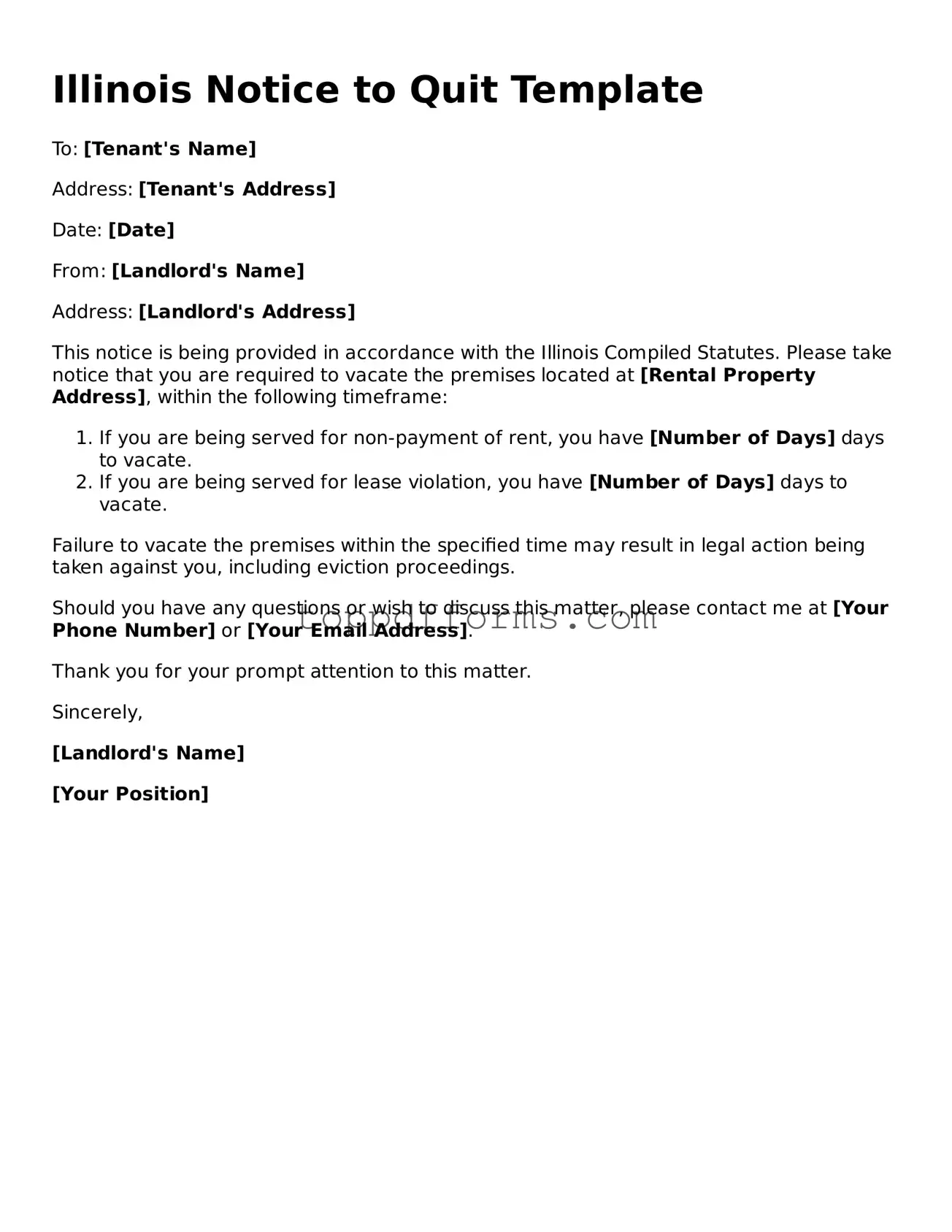What is the Illinois Notice to Quit form?
The Illinois Notice to Quit form is a legal document used by landlords to notify tenants that they must vacate the rental property. This notice is typically issued when a tenant has failed to pay rent or has violated other terms of the lease agreement. It serves as a formal request for the tenant to leave the premises within a specified timeframe.
When should a landlord use the Notice to Quit?
A landlord should use the Notice to Quit when a tenant is in breach of the lease agreement. Common reasons include non-payment of rent, lease violations, or expiration of the lease term. The notice is an essential first step in the eviction process, providing the tenant with an opportunity to remedy the situation before further legal action is taken.
How long does a tenant have to respond to a Notice to Quit?
The response time varies depending on the reason for the notice. For non-payment of rent, Illinois law typically allows a tenant five days to pay the overdue rent or vacate the property. In cases of lease violations, the notice may require the tenant to remedy the situation within a specific timeframe, often ranging from 10 to 30 days.
Is the Notice to Quit required to initiate eviction proceedings?
Yes, issuing a Notice to Quit is generally required before a landlord can file for eviction in Illinois. This notice provides the tenant with an opportunity to address the issue at hand. Skipping this step could result in delays or complications in the eviction process.
What information should be included in the Notice to Quit?
The Notice to Quit should clearly state the reason for the notice, the date by which the tenant must vacate, and any relevant details regarding the lease agreement. It should also include the landlord's contact information and be signed by the landlord or their authorized representative.
Can a tenant contest a Notice to Quit?
Yes, a tenant has the right to contest a Notice to Quit. If the tenant believes the notice is unjust or if they have rectified the issue, they can respond to the landlord or seek legal advice. If the matter escalates to court, the tenant can present their case during the eviction proceedings.
What happens if a tenant ignores the Notice to Quit?
If a tenant ignores the Notice to Quit, the landlord may proceed with filing an eviction lawsuit. The court will then review the case, and if the landlord's claims are valid, the court may issue an order for the tenant to vacate the property.
Are there any specific rules regarding the delivery of the Notice to Quit?
Yes, Illinois law requires that the Notice to Quit be delivered in a specific manner. It can be served personally to the tenant, sent via certified mail, or posted on the property. Proper delivery ensures that the tenant is aware of the notice and its contents.
Can a tenant receive a Notice to Quit for reasons other than non-payment of rent?
Yes, a tenant can receive a Notice to Quit for various reasons beyond non-payment. These can include lease violations, such as unauthorized pets, illegal activities, or damage to the property. Each situation will depend on the specific terms outlined in the lease agreement.
